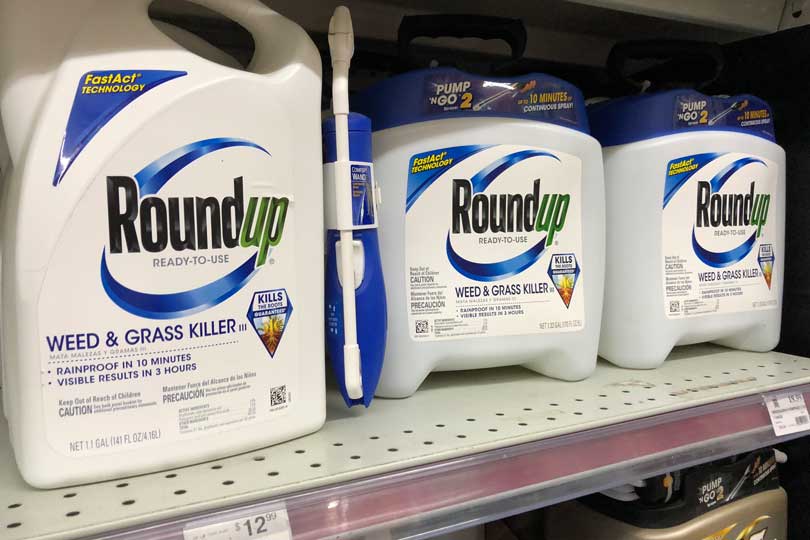By Jessica Domel
Multimedia Reporter
The California school groundskeeper who sued Monsanto Company alleging their glyphosate-based herbicides Roundup and RangerPro caused his non-Hodgkin’s Lymphoma (NHL) has accepted a judge-reduced award in the case.
On Aug. 10, a jury awarded plaintiff Dewayne Johnson $289 million—$39 million in compensatory damages and the rest in punitive damages.
After denying Bayer AG, the new owner of Monsanto Company, a new trial in October, Judge Suzanne Bolanos announced she is reducing the punitive damages award to $39 million to comply with California and federal law.
Johnson accepted the $78 million settlement this week, which means Bayer AG and Monsanto will not receive a new trial on the punitive damages segment of the award.
“The Plaintiff accepts the remittitur with the intent to avoid the further burden of a new trial or appeal,” court documents submitted by Johnson’s attorneys said.
Johnson reportedly started using glyphosate-based herbicides around 30 times a year as a school groundskeeper in June 2012.
In October 2014, around 29 months after first using the herbicides, he was diagnosed with NHL.
According to court documents, he stopped using glyphosate products in January 2016 before filing suit against Monsanto.
“Dr. (Chadi) Nabhan opined that sun exposure, tobacco and alcohol are not known causes of NHL and could therefore be excluded. After conducting his differential diagnosis, Dr. Nabhan concluded that Mr. Johnson’s only known risk factors were his race (African-American) and exposure to GBHs (glyphosate-based herbicides),” Bolanos’ decision to reduce the award said.
Nabhan was not Johnson’s doctor but examined him and reviewed his files.
Johnson’s attorneys alleged they’ve seen internal documents proving Monsanto knew, and has known for decades, glyphosate can cause cancer.
Bayer denies Johnson’s claims glyphosate-based herbicides cause cancer and points to hundreds of studies and global government approval for use citing no link between glyphosate and cancer.
The U.S. Environmental Protection Agency (EPA), National Institutes of Health (NIH), United Nation’s Food and Agriculture Organization, European Food Safety Authority, European Chemicals Agency and government agencies in Australia, Canada, Japan, New Zealand and Germany have all said glyphosate is unlikely to cause cancer in humans.
The plaintiffs pointed to a review by the World Health Organization (WHO) International Agency for Research on Cancer (IARC) listing glyphosate as a probable carcinogen.
“The evidence showed that Monsanto has produced GBHs in the United States and much of the rest of the world for decades and that glyphosate has developed one of the largest bodies of scientific data of any substance in the world,” Bolanos wrote. “Before and after IARC’s classification of glyphosate as a ‘probable’ human carcinogen, regulatory and public health agencies worldwide have reviewed and rejected claims about the carcinogenicity of GBHs.”
The judge recognized in her order denying Bayer a new trial that California law recognizes proof is especially troublesome in cases involving cancer, because it is difficult to determine the nature and cause of a particular cancerous growth.
Bolanos wrote there is no need for Nabhan to eliminate other possible causes of Johnson’s cancer, because there was no substantial evidence of an alternative explanation for it, giving the jury the ability to give weight to Nabhan’s testimony.
According to EPA, it has reviewed dietary, residential and non-occupational, aggregate and occupational exposures to glyphosate-based herbicides.
“Glyphosate is considered to have little to no hazard when exposure is to the skin or when it is inhaled,” Dr. Anna Lowit, senior science advisor for EPA’s Office of Pesticide Programs, testified to the House Science Committee earlier this year.
EPA’s study was developed with “high end assumptions” known to be overestimates of exposure.
“Even with these assumptions, no risk to humans, including infants and children, were identified,” Lowit said.
The difference between EPA’s study and IARC’s review, according to Lowit, is the IAR


taxes cause cancer and more and even death……..same logic ……….oroerty taxes are the worst!………do not farm and see what happens ….or get them to pay anyone who used and died from a cancer of any kind collect 39 million ….send the check for my mom asap…….how stupid is stupid………stop this stupid use of laws and courts